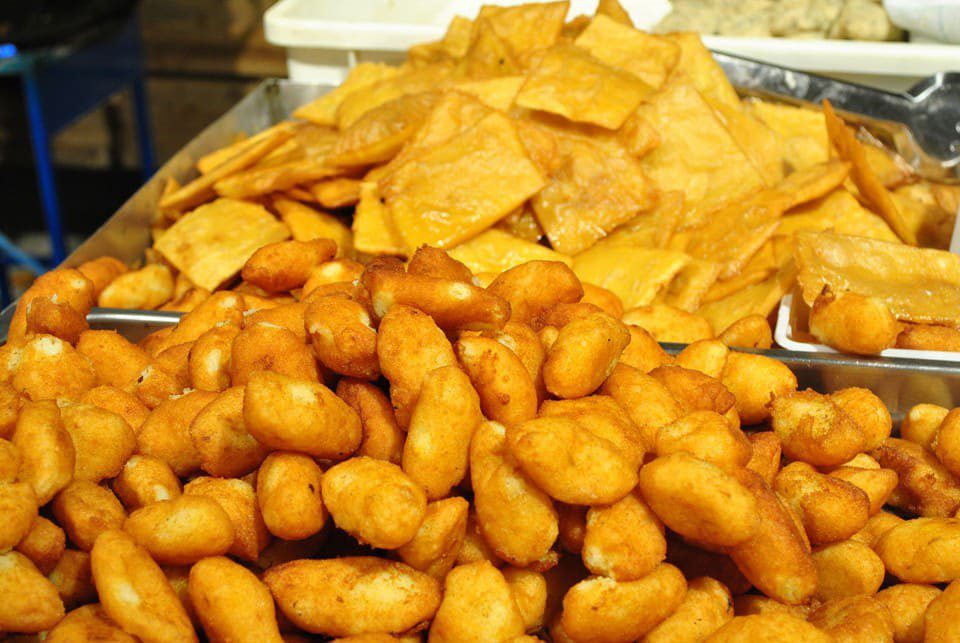The gluten-free chickpea flour adds a touch of exotic to panelle the Sicilian street-food par excellence. Along with cazzilli and sfincione, walking throughout the Vucciria market never tast better.
Flavors and Knowledge
Sep 8

{Panelle and Cazzilli Images attribution via Visit Sicily}
Tour Italy 2022
Buongiorno amici:
I usually meet with my Italian friends at Roma Gourmet on Federal Hill in Providence for a morning cappuccino, a chat about life here in the States, and the latest developments in our motherland. On most mornings, often around 11 am the conversation shifts to food. The time proximity to lunchtime is crucial to aged retired Italians. They begin staring at their watches and continue to do so until just about 20 minutes past eleven, the time where all of them get up simultaneously and with somber apology leave the premises.
You probably guessed why. It’s lunchtime. The world would undoubtedly end if Italians did not sit at the table precisely at noon. So often ridicule ourselves about the cooking of the regions we came from and proudly displayed nationalism through food.
I was always intrigued about Italy’s street foods and asked my Italian compari for their memorable childhood snacks. On one occasion, I asked a gentleman from Palermo if he would be interested in teaching us the process of making “Le panelle,” a typical street snack from Sicily. Equipped with excitement and a great sense of discovery, we met at one of my restaurants nearby.
Filippo Napoli from Sicily brought his homemade wine, while I offered some cheeses variety and aged salumi. Next, Paolo Misuraca from Calabria showed up ready to indulge, and Carmine “il professore” from Lazio sat at the bar watching soccer while drinking. Next, we shifted to the kitchen, where the Panelle King was performing his magic.
His name is Franco Lo Buono, also known as “Dotto”, the doctor. He is not a doctor and never went to medical school, but years ago, he was involved with the Giovanni 23d Soccer team, and his job was to alleviate the physical ailments of the players. I am not confident that those ailments ever went away. Franco was born in Palermo and learned the art of making “le panelle’ from his grandmother.
He fried them lightly, and with a paper towel, removed the excessive oil residue. He then placed them in a large platter and kept them warm until he sliced large soft rolls and filled them with the oily panelle. They were terrific, different, but most of all, they gave us the great feeling of sharing the art of communicating food.
Of course, through conversations and several quarts of homemade wine, we also discovered the history of this glorious Sicilian snack that Franco prepared. He said the panelle represents one of Palermo’s most well-recognized street foods, the fried version of something called farinata di Ceci (chickpea flour), elsewhere in Liguria and areas of Northern Africa.
These miniature and flat pancakes are a testimony of the history of the people from the Mediterranean basin. Around the 9th and 11 Centuries, the Arabs, while dominating Sicily, already featured a mixture of water and fine chickpea flour cooked in terracotta pots until dense and creamy. Then it was flattened and fried into small pieces. Hence, the Sicilian proverb” pari na paniella,” (you look similar to a panella), was referred to as an object which had the misfortune to be flattened by excessive weight.
Palermo, Sicily, offers several characteristic snacks often accompanied by “cazzilli,” a version of potato croquettes. You can find them everywhere in the typical “friggitorie,” fried food places, or in the famous street carts, which you can find on any busy streets of the historic center. The second most important ingredient is the frying oil quality and constant temperature monitoring in addition to the well-kept secret recipe.
In addition to Panelle, Palermo offers other succulent street foods, such as boiled octopus, stigghiole (section of the intestine of goats and lamb), and sfincione. All of them are available in a different quarter of the city, and each vendor specializes in the preparation usually passed on from previous generations.

{Panelle Image attribution via Mangiabedda} Thanks, Nadia
Share Flavors + Knowledge
Panelle / Recipe
Serves 4-6
½ pound chickpea flour
1-1/2 teaspoon salt
Two tablespoons chopped parsley, chopped
Sunflower seed oil for frying
Procedure
In a pot, dissolve the chickpea flour in 4 cups of cold water. Add the salt, parsley, and cook over medium heat, often stirring, for about 20 minutes. It will resemble yellowish farina. It looks uncooked, but it is.
Remove from the heat. Spread the mush over a large baking sheet to cool slightly, spreading it evenly until it is about 1/8 inch thick after cooling and drying a bit but still warm. Create a circle of about 4 inches in diameter. Heat the oil for deep frying to 360 F.
Deep fry the panelle until you achieve a golden color, about 1 minute on each side. Drain on the paper towel, and serve warm on bread or stand-alone.
© 2021 Chef Walters Cooking School Unsubscribe
CWCS 162 Mayfield Avenue Cranston Rhode Island 02920












